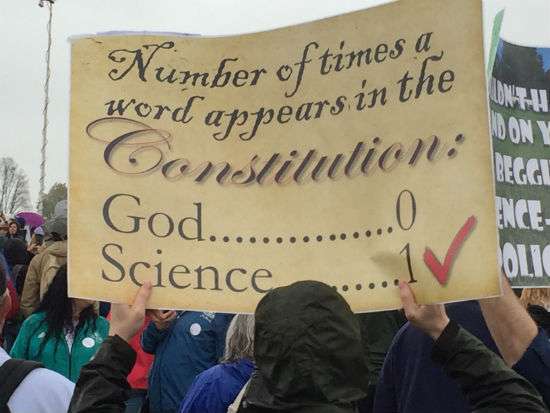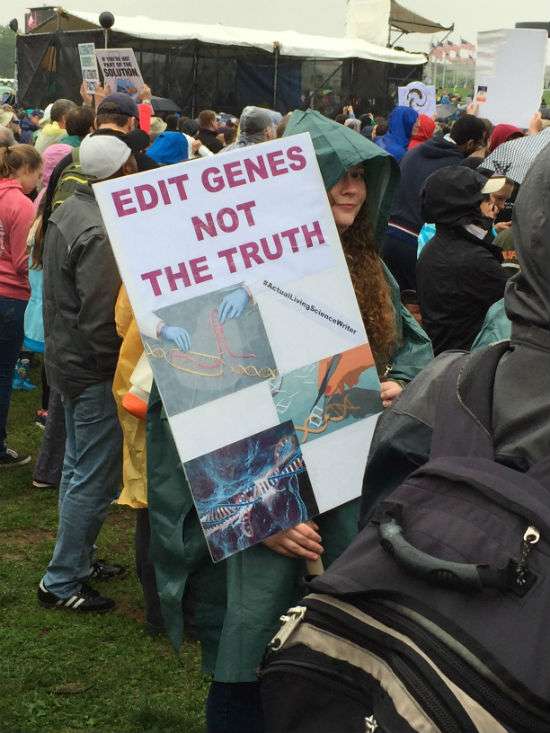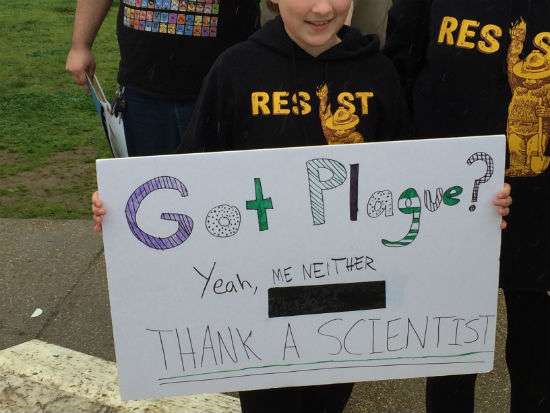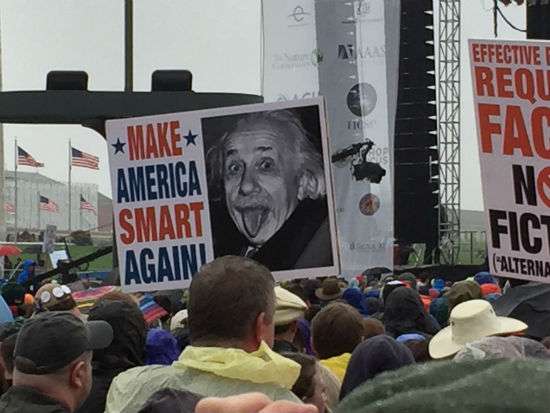March for Science: R&D Funding Is Not Falling—It's at an All Time High
See also some photos of rally signs that I found funny and interesting
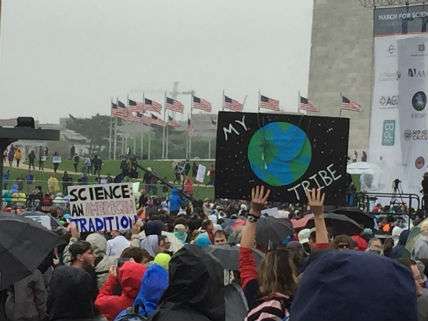
On Saturday I wandered down to the National Mall to hang out with the folks who were participating in the March for Science. Despite the rain, the crowd was mostly in a celebratory and not too overtly partisan mood. The event's kick-off on the grounds of the Washington Monument was a series of short speeches punctuated by musical interludes. For instance, the crowd was amused by Thomas Dolby performing his hit "She Blinded Me With Science." Several of the speakers mentioned their worries about proposed cuts in federal R&D funding, and a couple even suggested that R&D funding had been falling for decades. "Federal support has been dropping since the 1960s," declared Lydia Villa-Komaroff, former CEO of a cell biology company called Cytonome and a co-chair of the March to NBC News.
Villa-Komaroff's claim is at best misleading. It is true that the percentage of the federal budget devoted to R&D has been falling since the space race with Soviet Union abated, but the amounts in real dollars that the Feds have spent on R&D have risen more or less steadily over the past four decades. In November 2016, the National Science Foundation reported that U.S. R&D spending is at an all time high of $499 billion in 2015. As the American Institute of Physics noted, "Businesses funded $355 billion, or 69 percent, continuing a long-term trend of private enterprise financing an increasingly large majority of R&D nationwide. The federal government, the second-largest funder of U.S. R&D, sponsored an estimated $113 billion, or 23 percent of the total."
"Those private sector efforts are now the dominant form of research activity in the United States, with business spending $3 on research for every $1 invested by the U.S. government. In the 1960s the federal government outspent industry by a two-to-one margin, but the balance tipped in 1980," noted Science in its report on the NSF's R&D funding study.

Of course, many of the Marchers for Science are concerned that President Trump's "skinny budget" that aims to cut federal R&D funding to support his military buildup might actually happen. This seems unlikely.
That being said, I share below some of the signs at the March for Science rally that I rather liked.

